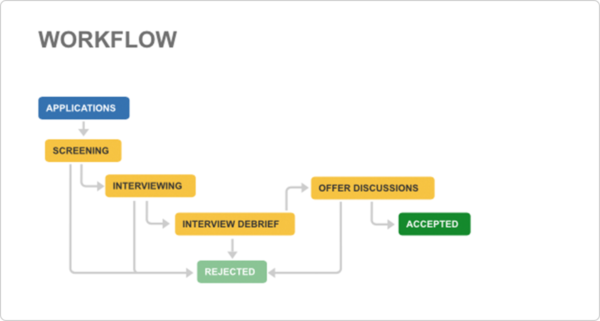A Jira issue can mean different things to your team members.
To software developers: epics, stories, sub-tasks. To IT help desk managers: tickets.
But what do “issues” mean to a marketing or HR manager? Maybe you’ve heard one say: “Issues? I’m not sure I have issues, per se. I have tasks, though. Is that the same thing?”
The quick answer: yes.
Jira issues can be considered as tasks
Tasks take on different forms for different teams. Some tasks mean creating documents, tracking candidates through the interview process, tracking leads and opportunities until they come to fruition, and reviewing purchase approvals.
As a Jira admin, you know how to implement Jira Software for software teams, and Jira Service Desk for IT teams. You may have heard about Jira Core and that it was built for business teams (marketing, HR, operations, finance, legal). Jira Core is included in every Jira instance (it’s equivalent to the business templates you see when you create a Jira project), and with this post we hope to encourage you to help implement Jira Core for business teams in the same way you do for other teams.
When we launched Jira Core, we started off with 3 business templates to make it easier to get your business teams onboarded. In addition, we taught Jira admins how to customize workflows and create custom fields for these business teams.
We know that implementing these customizations takes time and sometimes teams just want to get started right away and get their work organized. To help you get your business teams started faster, we’ve built 5 new business project templates that are included in every Jira cloud instance.
Jira Core’s 5 new business project templates
These business project templates come with a lot of customizations that are targeted to how teams manage and track work. These not only come with specific Jira issue types, but they come with unique workflows and custom fields to help gather pertinent information. What’s great about this is that the unique workflows are automatically reflected in your Jira Core board. So you’ll see your “tasks” in each column or step of the process. With all of this work done for you, you can focus on other things. For those of you who still want customizations, no worries. You can still customize these project templates and add more workflow statuses or custom fields as teams need.
Now, let’s show you where you’ll see this new feature. For those of you who have a Jira cloud instance, when creating a new Jira project, you’ll see a new option labeled “More project templates.” Click on this option and voilà! New templates to get your teams started.
Let’s review what each of these templates has to offer. Remember, issue types are the items of work you track, including people.
Content management
Issue type: Asset
Custom Fields: Content type, Pub date
Use case: Before assets like blogs, presentations, and brochures get published, they must be created, reviewed, and approved by team members. Using the Content management template allows for teams to track the progress of work from to-do to published.
Document approval
Work item: Document
Custom Fields: Client, Reference
Use case: Some documents have legal and financial impact on the company. Documents like legal contracts and policies require traceability and accountability of changes and updates. The Document approval template allows teams to gather the right information and create an audit trail so that teams can see who, what, and when edits were made.
Procurement
Work item: Order
Custom Fields: Amount, Vendor, Account
Use case: This template is built specifically for finance and procurement teams to help track orders to ensure proper approval processes take place. Gotta stay within budget, right?
Recruitment
Work item: Candidate
Custom Fields: Hiring manager, Hiring department, Job role
Use case: Finding the right people for the job is a juggling act. Tons of resumes to screen, and everything that goes into keeping track of multiple candidates going through the pipeline. The Recruitment template helps track candidates and all the related elements like interview schedules and (endless) paperwork.
Lead Tracking
Work item: Lead
Custom Fields: Opportunity value
Use case: Tracking communication with multiple vendors and clients is easier when it’s viewed in a pipeline. Teams can list all opportunities and gather details of what’s been negotiated and why it was rejected.
Whatever business teams are working on, Jira Core’s new business project templates can help manage their “issues” – from content, to people, to purchases and more. Check out the new business project templates and see how they’ll help your business teams.
